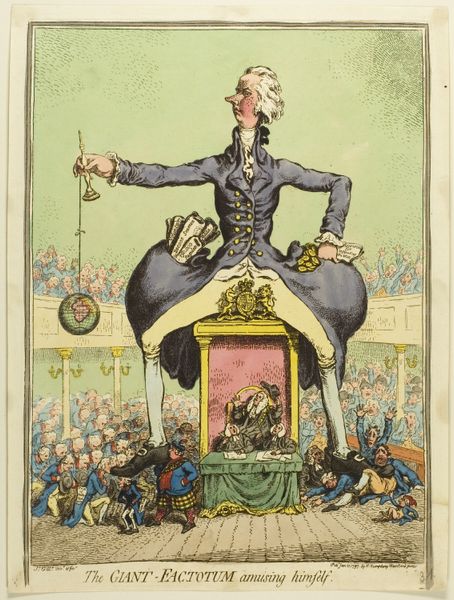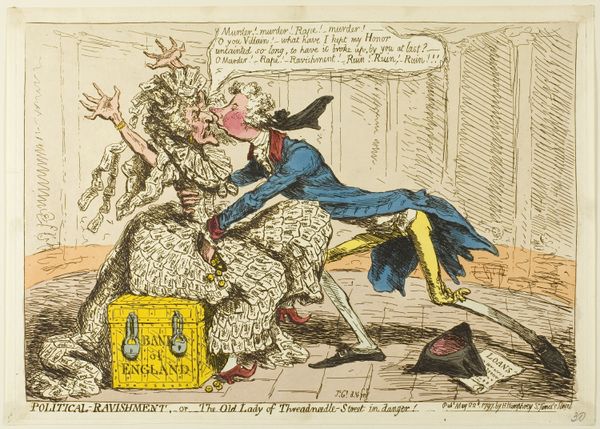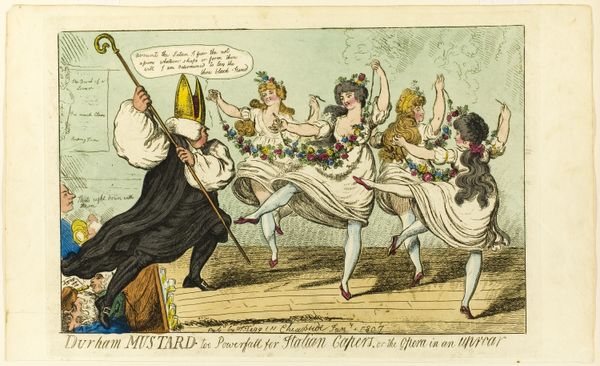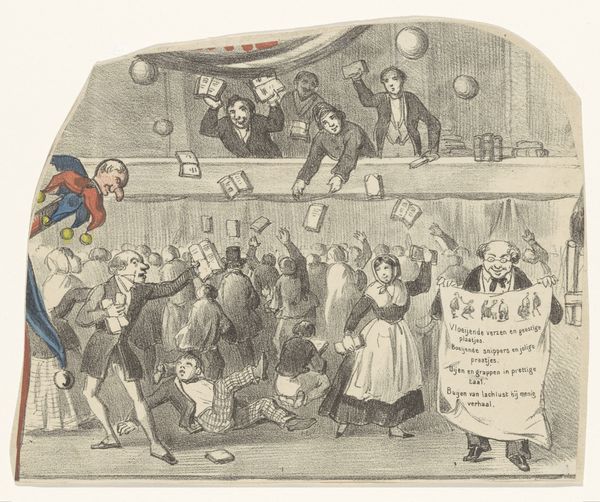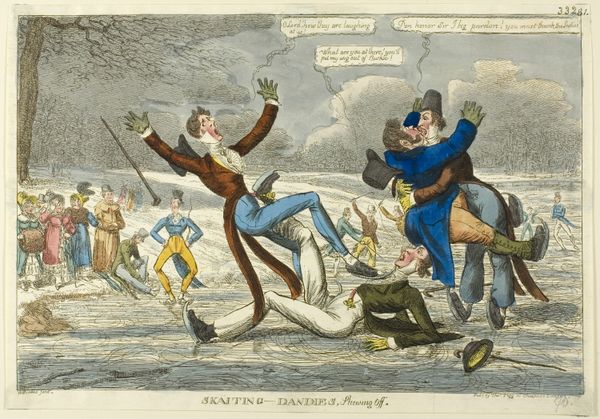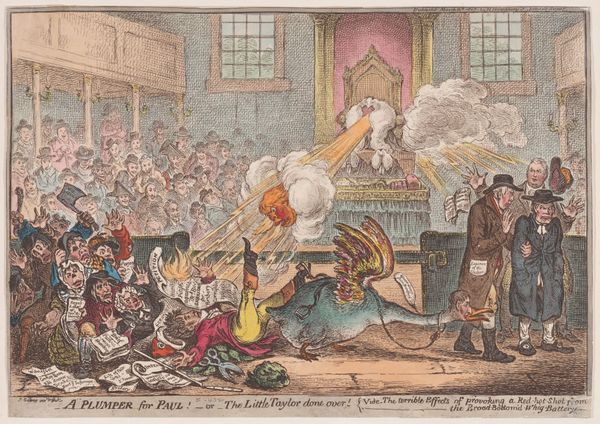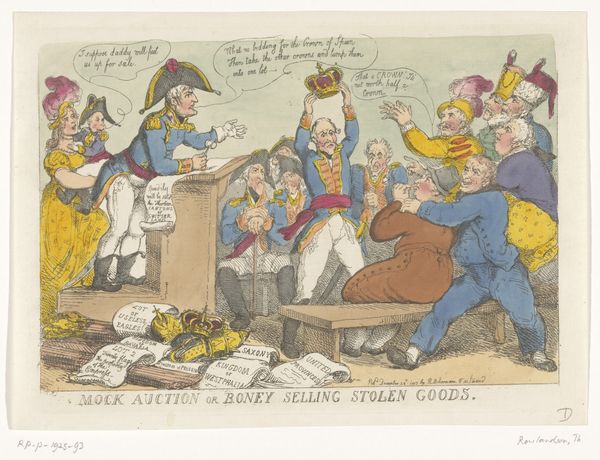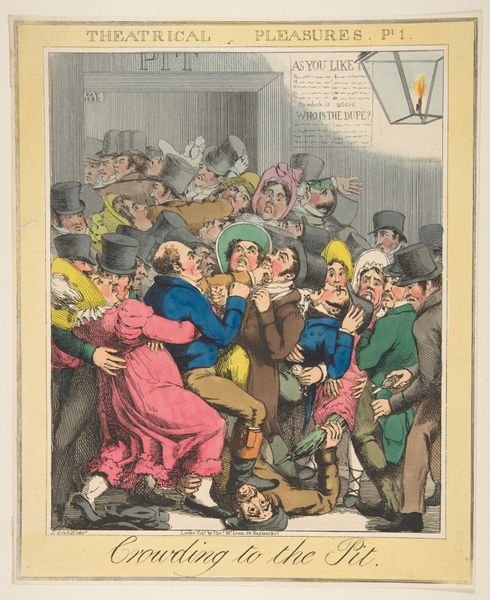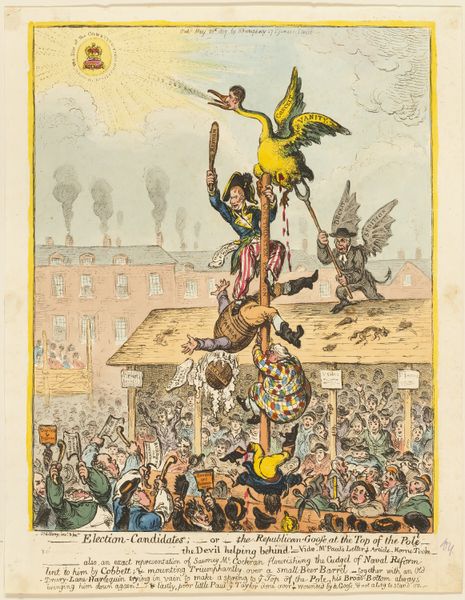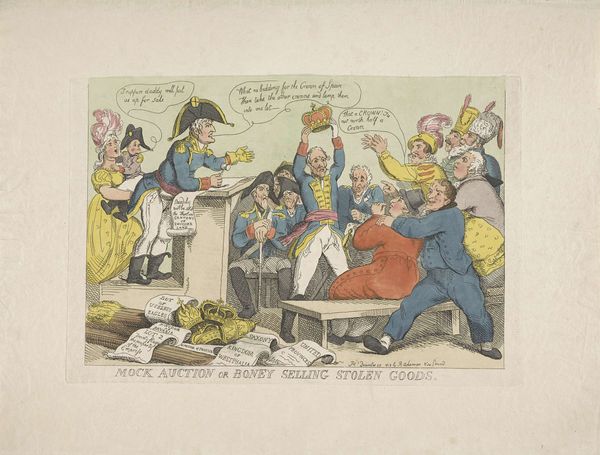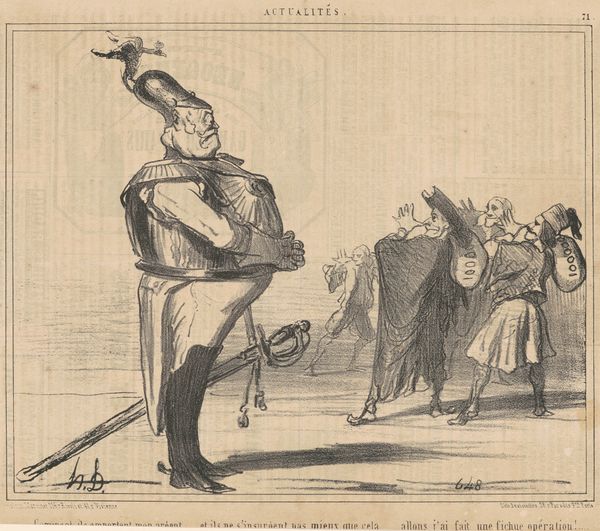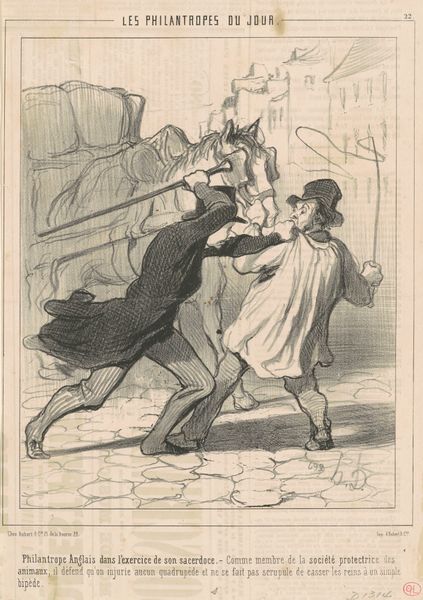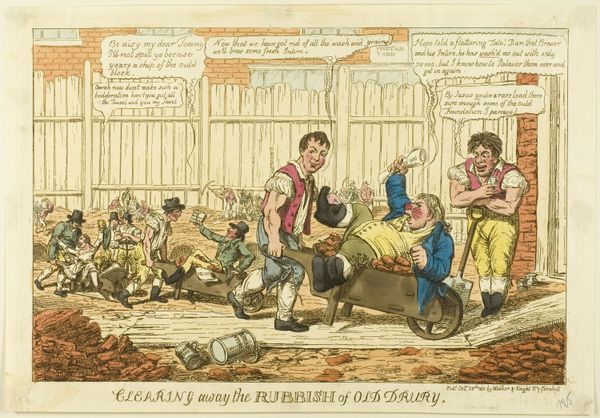
drawing, print, watercolor, engraving
#
drawing
# print
#
caricature
#
watercolor
#
romanticism
#
watercolour illustration
#
history-painting
#
engraving
#
watercolor
Dimensions: plate: 14 1/16 x 10 in. (35.7 x 25.4 cm) sheet: 15 3/8 x 11 1/2 in. (39.1 x 29.2 cm)
Copyright: Public Domain
Curator: This is "Uncorking Old Sherry," a print made around 1805 by the British artist James Gillray, currently residing at The Met. I find the textures here quite compelling – the stark line work contrasted with the softness of the watercolor washes. It gives a kind of feverish, energetic feel. Editor: Well, my initial thought goes straight to the caricature itself – that grotesque figure dominates the scene. Tell me more about who exactly Gillray's taking aim at, and the processes informing such pieces? Curator: He's satirizing William Pitt the Younger, then Prime Minister. The "old sherry" represents pent-up political rhetoric, bursting forth when uncorked. Look at the printmaking itself. Gillray uses etching and engraving, laborious processes involving coating a metal plate with wax, etching the design, and then printing it. The final touches, applied through watercolour, transform the printed image into an artwork infused with vibrant but uneven application. Editor: So, the physical act of creating these prints allowed them to be widely circulated, essentially weaponizing the imagery and making it public for mass consumption. How was something like this initially viewed, and does its presentation in a museum setting impact our reading today? Curator: Absolutely. These prints were intended for a broad audience. Taverns, print shops, even street vendors would have displayed and sold them. The Met situates "Uncorking Old Sherry" as an historical document within a curated narrative. What was once a tool of partisan politics now occupies a different cultural space, prompting us to contemplate the legacy and consequences of political representation. Editor: I agree, viewing it now we’re distanced from its immediate political bite. Yet, Gillray’s skilled rendering and its presentation within the hallowed halls of a museum transforms our appreciation. From a disposable, readily circulated artefact, the piece acquires status. Its commentary transcends the event as it assumes a life of its own in an enduring narrative about power. Curator: Exactly. What's great is considering how the material – ink on paper, with a touch of watercolor – fueled this transformation over centuries of socio-political movements. It began as agitprop, and it continues to evolve today, within institutions and scholarly discourse.
Comments
No comments
Be the first to comment and join the conversation on the ultimate creative platform.
